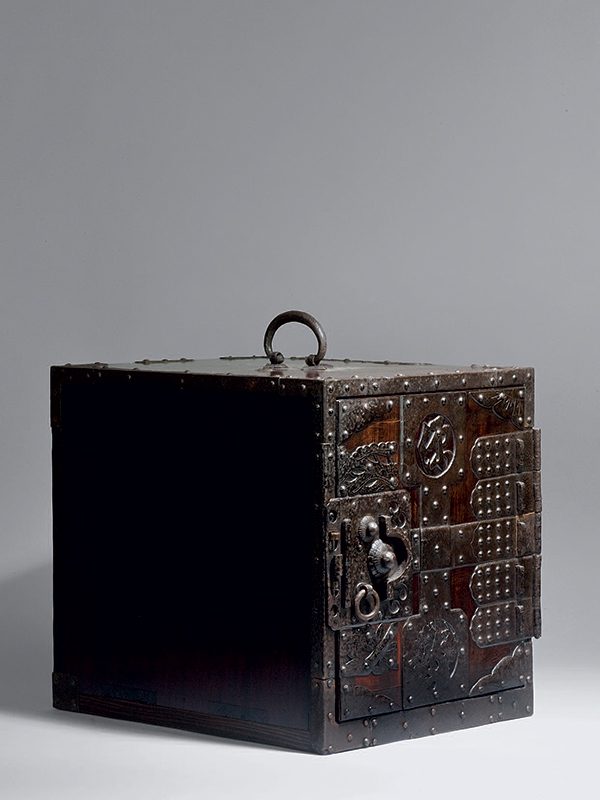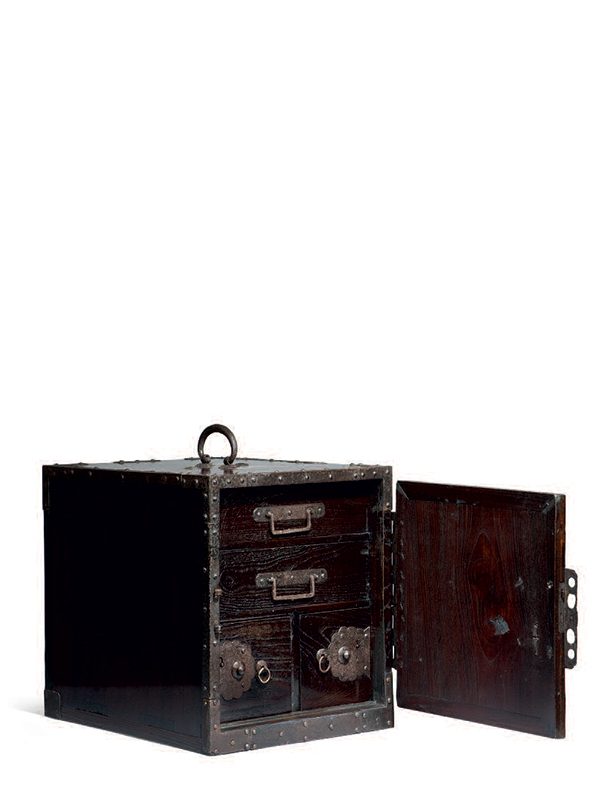Sea chest funa-dansu of kakesuzuri type
A small sea chest, fun-adansu, of kakesuzuri type. The chest is constructed from paulownia wood and is covered in iron mounts that are attached to the wood by small metal pins. The chest has a single door, hinged on the right-hand side with five elaborate metal hinges. The door is richly decorated with iron mounts, partly executed in openwork and one incorporates a japanese character. The interior is fitted with two large drawers with rectangular bail handles over two smaller drawers, each with a ring pull. The smaller drawers are individually lockable. Behind the left-hand drawer on the bottom is a hidden money box with a sliding top. The main hinged door has a complicated double locking mechanism. The chest has a single bail handle on the top. The wood is of warm deep brown colour with a rich patina.
This type of heavy chest is referred to in Japanese as a fun-adansu or sea chest. Chests like this were made from the Edo period (1603 - 1868) well into the Meiji period (1868 - 1912), and used on the small merchant vessels plying the Sea of Japan and the inland sea between Osaka and Hokkaido Island.[1] The present example is of the kakesuzuri (‘portable writing’) type, made specifically for use by the captain or the ship’s owner for safekeeping ledgers and valuables. Chests with a fitted, lockable interior and with densely ornamental cutiron mounts appear to have been made in the town of Ogi on Sado Island, a major port on the Sea of Japan trading route and the largest fun-adansu production centre of northern Japan.[2] A closely comparable fun-adansu of kakesuzuri type, dated to 1839 is illustrated by Koizumi.[3]
- Koizumi, Kazuko, Traditional Japanese Chests, a Definitive Guide, Kodansha International, Tokyo, New York, London, 2010, p. 8
- Koizumi, Kazuko op. cit. p. 10
- Koizumi, Kazuko op. cit. p. 10


